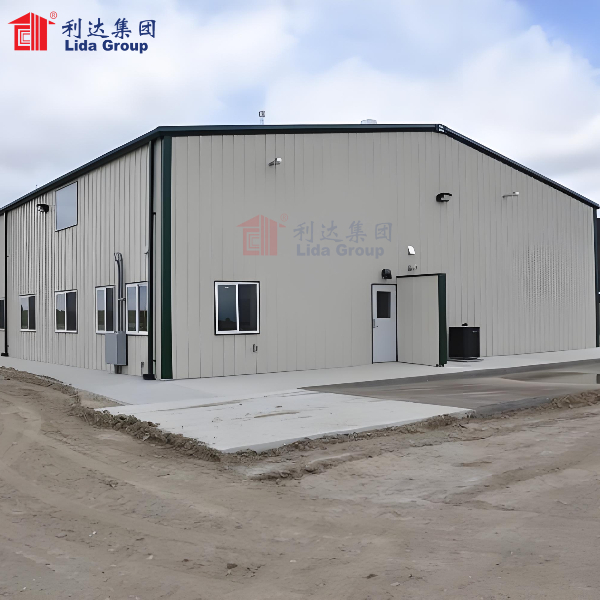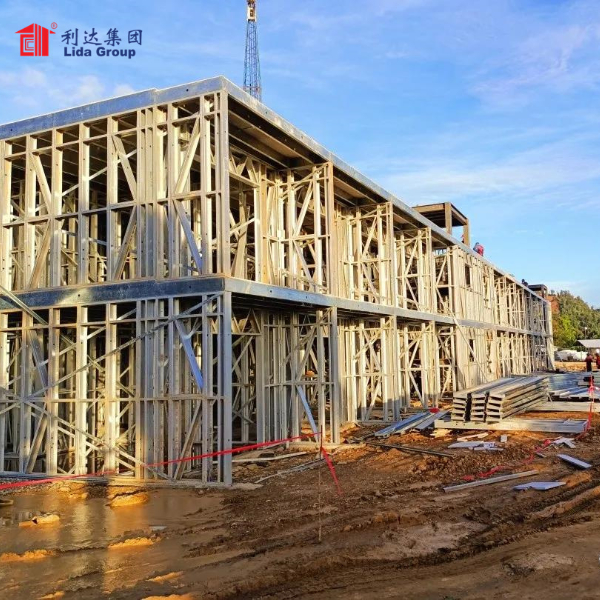Introduction
Lida Group has established itself as a reputable provider of steel structure buildings, offering innovative solutions that prioritize efficient energy management. With a commitment to sustainability and environmental responsibility, Lida Group has revolutionized the construction industry by integrating energy-efficient features into their steel structures. In this article, we will explore how Lida Group’s buildings achieve efficient energy management, their impact on the environment, and the benefits they offer to clients and communities.
- Energy-Efficient Design Principles
a. Passive Design Strategies: Lida Group incorporates passive design strategies into their steel structure buildings to optimize energy efficiency. These strategies utilize the building’s natural surroundings, orientation, and materials to reduce the need for artificial heating, cooling, and lighting. Passive design elements include proper insulation, shading devices, natural ventilation, and maximizing daylight penetration. Lida Group’s buildings are designed to minimize energy consumption while maintaining occupant comfort.
b. Thermal Insulation: Lida Group prioritizes thermal insulation in their steel structures to minimize heat transfer. High-quality insulation materials, such as expanded polystyrene (EPS) or polyurethane (PU) foam, are used to create a thermal barrier, reducing the need for heating and cooling systems. The insulation helps maintain a stable indoor temperature, reducing energy consumption and enhancing occupant comfort.
c. Efficient Lighting Systems: Lida Group incorporates energy-efficient lighting systems, such as LED (light-emitting diode) technology, into their steel structure buildings. LED lighting consumes significantly less energy than traditional lighting options while providing superior illumination. Lida Group’s lighting designs focus on optimizing natural lighting through the use of skylights, large windows, and light shelves. By combining natural light with efficient artificial lighting, energy consumption is minimized.
d. HVAC Systems and Controls: Lida Group integrates advanced heating, ventilation, and air conditioning (HVAC) systems into their steel structures. These systems are designed to be energy-efficient, utilizing technologies such as variable refrigerant flow (VRF) systems, heat recovery ventilation (HRV), and programmable thermostats. Lida Group also incorporates smart building controls that monitor and regulate energy usage based on occupancy and environmental conditions, further optimizing energy management.
- Sustainable Energy Solutions
a. Renewable Energy Integration: Lida Group promotes the integration of renewable energy sources into their steel structure buildings. This includes incorporating solar panels, wind turbines, or geothermal systems to generate clean energy on-site. By harnessing renewable energy, Lida Group’s buildings reduce reliance on traditional energy sources, lower greenhouse gas emissions, and contribute to a more sustainable future.
b. Energy-Efficient Building Envelope: Lida Group pays special attention to the building envelope, which includes walls, roofs, windows, and doors. By utilizing energy-efficient materials and designs, such as double-glazed windows, insulated panels, and airtight construction, Lida Group minimizes thermal bridging and air leakage. An energy-efficient building envelope reduces heating and cooling loads, resulting in lower energy consumption and increased comfort for occupants.
c. Energy Monitoring and Management Systems: Lida Group implements energy monitoring and management systems in their steel structures. These systems track energy consumption, identify areas of inefficiency, and provide real-time data for optimizing energy usage. By monitoring and analyzing energy data, Lida Group can identify opportunities to reduce energy waste, improve system performance, and make informed decisions for energy management.
- Environmental Impact and Benefits
a. Reduced Carbon Footprint: Lida Group’s energy-efficient steel structure buildings significantly reduce carbon emissions compared to conventional construction methods. By minimizing energy consumption and integrating renewable energy sources, these buildings contribute to mitigating climate change and preserving the environment.
b. Lower Energy Costs: Lida Group’s energy-efficient designs result in reduced energy consumption, leading to lower operational costs for building owners and occupants. The integration of renewable energy sources can even result in net-zero or energy-positive buildings, where the energy generated on-site exceeds the building’s energy needs, providing additional cost savings.
c. Improved Indoor Environmental Quality: Lida Group’s focus on energy-efficient design goes hand in hand with creating a healthier and more comfortable indoor environment. Proper insulation, ventilation systems, and daylight optimization contribute to improved indoor air quality, thermal comfort, and overall occupant well-being.
d. Long-Term Durability: Steel structure buildings constructed by Lida Group are known for their durability and longevity. Steel is a strong and resilient material that requires minimal maintenance, reducing the need for frequent repairs or replacements. This longevity minimizes material waste and contributes to the sustainable use of resources.
- Lida Group’s Commitment to Energy Management
a. Research and Development: Lida Group invests in research and development to continuously improve their energy-efficient solutions. They stay abreast of the latest advancements in sustainable technologies, materials, and construction practices, integrating them into their designs. Lida Group’s commitment to innovation ensures that they remain at the forefront of energy-efficient construction.
b. Collaboration and Partnerships: Lida Group collaborateswith industry experts, architects, engineers, and suppliers to foster innovation and develop energy-efficient solutions. By partnering with organizations and institutions that share their commitment to sustainability, Lida Group expands their knowledge base and strengthens their ability to deliver cutting-edge energy management solutions.
c. Education and Awareness: Lida Group actively promotes education and awareness regarding the importance of energy-efficient construction practices. They provide resources, training programs, and seminars to clients, industry professionals, and the wider community. By sharing their expertise and knowledge, Lida Group aims to inspire others to adopt energy-efficient practices and contribute to a greener future.
Conclusion
Lida Group’s steel structure buildings are at the forefront of efficient energy management in the construction industry. Through their focus on passive design strategies, thermal insulation, efficient lighting systems, HVAC technologies, and renewable energy integration, Lida Group is revolutionizing the way buildings are designed and operated. Their commitment to sustainability not only reduces energy consumption and carbon emissions but also offers numerous benefits to building owners and occupants, including lower energy costs, improved indoor environmental quality, and long-term durability. Lida Group’s dedication to energy management sets a new standard for the industry, paving the way for a greener and more sustainable built environment.
Post time: May-27-2024


